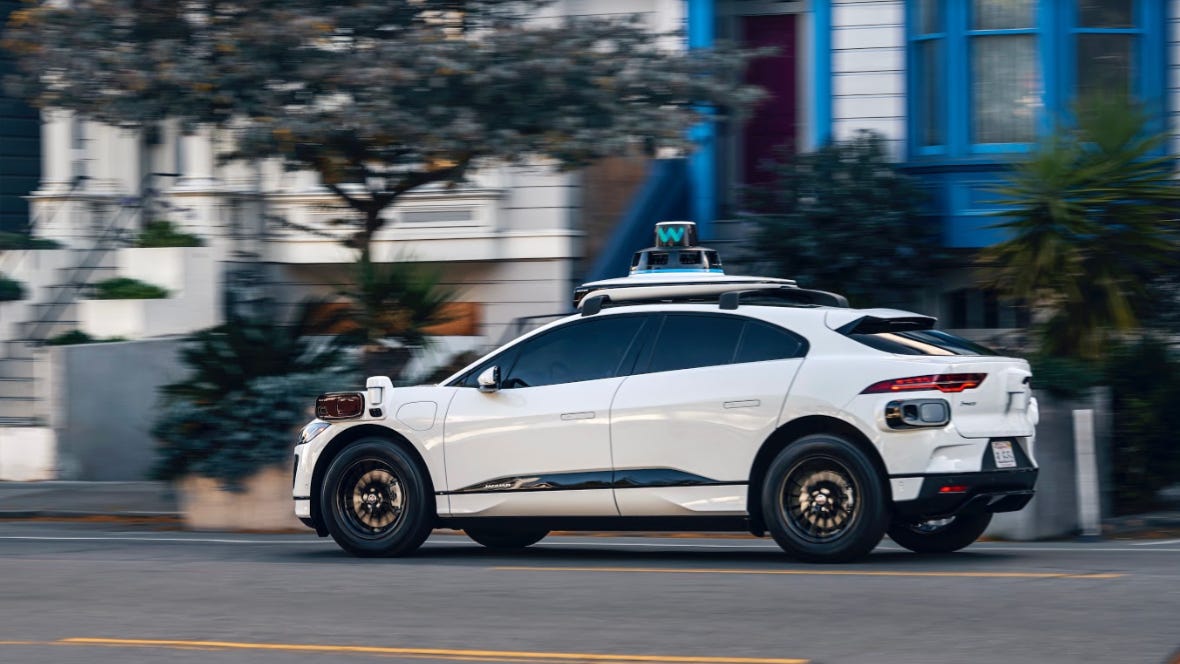Where is my self-driving car?
London can learn from San Francisco's approach to getting autonomous vehicles on the streets
Written by Shakeel Hashim for the Greater London Project. Shakeel writes about AI policy at Transformer.
On my recent trip to San Francisco, the most incredible sight was no longer the Golden Gate Bridge or Alcatraz. It was the 300-strong fleet of driverless Waymo taxis, now omnipresent around the city. Riding in one is a mind bogglingly futuristic experience: watching the wheel turn with nobody there to turn it was one of the most incredible experiences of my life, defying all assumptions about how a car should work.
Sitting in one, the promise of self-driving cars is immediately clear. They're statistically much safer than traditional vehicles, and though prices currently match Uber's, they'll inevitably drop as technology gets cheaper. What's most remarkable is how few issues they're causing in San Francisco: despite some teething problems (and one headline-grabbing incident involving Waymo's competitor, Cruise), everything is going rather well.
For most of the ride I just sat there, gawping at how seamless the journey was. But I couldn’t help but think: why on earth don't we have these in London yet?
The answer is irritating: there is no good reason at all. In May, the UK passed its Automated Vehicles Act, which the government claimed would put self-driving vehicles on British roads by 2026. This timeline is already maddeningly slow — it would put the UK a full five years behind California — and it's probably still too optimistic. The Act, according to law firm CMS, simply provides a broad framework — detailed secondary legislation is needed before cars can actually be on roads. A consultation was supposed to start soon after the Act passed, but the election has likely delayed that. The new Department for Transport, at least, has remained silent on the topic.
Part of the problem appears to be the terrible advice given to the government. A September 2023 report from the House of Commons Transport Committee is infuriating reading, full of citations from people who don't seem to know what they're talking about. One academic claimed the biggest challenge was convincing the public that self-driving vehicles are safe, while another questioned demand for the technology. Yet the American public seem perfectly unbothered, having already logged more than 2 million paid trips with Waymo. Most egregiously, author Christian Wolmar told the committee that "little progress had been made in developing and introducing self-driving vehicles over the last decade" — at a time when Waymo vehicles had already driven one million miles without a safety driver, encountering no reported injuries and only two collisions.
Exacerbating the bad advice is that the country's self-driving cheerleaders aren't particularly adept advocates — because they're not very good at it. News articles often cite Oxbotica, Wayve, Nissan Leaf and FiveAI (since acquired by Bosch), all of which have run trials in the UK. Yet because these companies don't admit that their capabilities trail that of American market leaders, they instead make out that self-driving technology is further away than it is. Last year a Nissan boss said that “we probably have 80% of the capability, but that last 20% is going to take some time”. That may be true for Nissan, but it doesn't seem true for Waymo.
In a typical display of British exceptionalism, the media also likes to argue that there is something uniquely difficult about London. We're told that London's rainy weather is a problem, despite San Francisco having an almost identical amount of rainfall. The Guardian, meanwhile, argues that self-driving cars face challenges, “particularly on Britain's busy and often chaotic urban roads” — as if San Francisco's chaotic streets are a walk in the park!
All this is hurting London. Aside from robbing the public of an excellent experience, a lack of self-driving cars will soon become an embarrassment. Being an early adopter, meanwhile, would serve as an advertisement for the city – helping us live up to Sadiq Khan's claim that we're at the “forefront of [the technology] revolution”.
To bring London to San Francisco's level, three steps are crucial. First, the Department for Transport should expedite the secondary regulations. Second, these regulations should fast-track companies that have proven themselves abroad. We know Waymo is safe; it shouldn't face the same hurdles as companies who haven’t established the same track record.
Finally, the government should stop fretting about “public trust” or business models. That's for the companies to figure out. Put the vehicles on the road and let the public decide. If San Francisco's experience is any indication, they'll embrace them wholeheartedly.
Community notes:
Swimming: Two weeks after GLP team member Harry Rushworth wrote about the importance of refurbishing London’s waterways for public use, we’re pleased to see that Greenland Dock in Surrey Quays will be open for public swimming until the 29th of October.
Building inspiration: And if you want proof that our vision for a London where we can build infrastructure is possible, you only need to look to the past. GLP team member Freddie Poser shared footage this week of the historic rebuild of Oxford Street Underground. Inspiring stuff!
Noise cameras: Chris, a Greater Londoner in our community Whatsapp Group, shared this excellent summary piece on how we can use noise cameras in London to stop excessively loud traffic.
Events: we’re confirming two events for October and November, stay tuned for more information soon.
Write for us: we’re amazed at the response we’ve had, and we’d like to start posting more than once a week. If you think of anything you want to write about London, please get in touch with us at founders@greaterlondon.co.
We hope you have a great(er) weekend!
Joe & the Greater London Project






